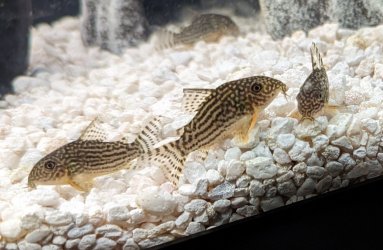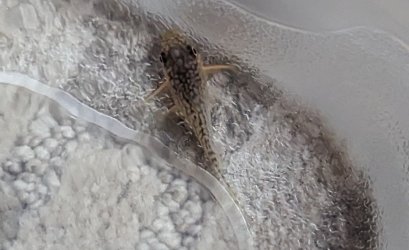Have a 10g tank with 6 cories and a betta. Everyone seems to get along, tank is clean, no ammonia or other issues that I'm aware, small amount of planting.
I noticed that one of my cories seems to have developed something on his head. Originally it had a whitish cottonish look but seems to have gone away into a sort of blister bump. I've pulled him out of the tank and he's stressed, obviously, but don't want to put him back in until I'm 100% sure it's OK. Originally I took him out, put him in a small half gallon container where he wasn't happy but put in some mardel anti-ich, which deals with fungus and protozoans, a very small amount. I don't see the whitish fuzz in the earlier picture but I still do see the bump. He seemed fine for 2 days but now I found him hiding and seemed to have some labored breathing, so I segregated him. Seems to still have energy but unsure of next steps. Thoughts are most welcome.
I noticed that one of my cories seems to have developed something on his head. Originally it had a whitish cottonish look but seems to have gone away into a sort of blister bump. I've pulled him out of the tank and he's stressed, obviously, but don't want to put him back in until I'm 100% sure it's OK. Originally I took him out, put him in a small half gallon container where he wasn't happy but put in some mardel anti-ich, which deals with fungus and protozoans, a very small amount. I don't see the whitish fuzz in the earlier picture but I still do see the bump. He seemed fine for 2 days but now I found him hiding and seemed to have some labored breathing, so I segregated him. Seems to still have energy but unsure of next steps. Thoughts are most welcome.



